The Growing Plus-size Market Faces Itty-bitty Assortments and Lack of Options

CeCe Olisa’s Instagram account is flooded with images of polka-dot slipdresses, brightly colored jumpsuits, leopard miniskirts, her favorite denim finds and lots of activewear.
But she’s the first to admit this is not the norm for plus-size women. As a style blogger, fashion consultant and cofounder of The CurvyCon, an annual shopping event for plus-size shoppers, Olisa gets access to some of the best plus-size fashions that brands have to offer. Everyday curvy girls, however, don’t have nearly as many options.
“If I wear a shirt on Instagram, I have 100 people asking me where I got the shirt,” Olisa told WWD. “But I’ve been looking for a year [for that shirt] before I ever posted it. And I feel heartbroken because I know it’s only because I’m a size 18 and I’m able to slide into this shirt from a skinny section. Because the style doesn’t exist in plus.”
The style blogger went on to explain that she’s gone from a size 28 to a size 18 over the last five years.
“And I take a real issue to that,” Olisa said. “That my style has gotten exponentially better the smaller my jeans size gets. Women should be able to express themselves through style. But it’s so hard for me to encourage a plus-size woman to be confident when she can’t have a closet full of clothes that help her do that.”
Countless media outlets have cited the statistic that roughly 67 percent of American women are size 14 or larger. But where this data came from is unclear. What is known is that fashion is extremely nuanced.
To start with, there is no industry standard for what classifies as “plus.” According to market research firm the NPD Group, most retailers define plus size as size 18 and up. But all companies and brands are free to make up their own size guidelines. As a result, some throw sizes 14 and up — or even as low as size 10 — into the mix. Other brands stop making sizes over a 12 or 14 altogether. There’s also tall plus, petite plus and juniors plus, all of which have special size requirements of their own.
In total, the women’s plus-size market accounts for almost 19 percent of the entire U.S. women’s apparel sales, which was worth $113.8 billion, for the 12 months ending May 2021, according to the NPD Group. That is up 1 share point from the same time in 2020.
There are clothing options in the plus-size market, of course. But they’re limited, especially when compared with traditional sizes, or what the industry deems “straight sizes.”
“More diverse options are what’s lacking,” said Lauren Chan, founder of Henning, a plus-size women’s apparel brand. “The options for straight sizes are epic. There’s a never-ending way a straight-size person can express themselves. In the plus-size market, we get one tone, so we end up shopping in piecemeal: One thing from one brand and another from another, wherever we can find things that fit. We need more brands that can make us feel like ourselves. That’s what excites customers. It makes them brand loyal.”
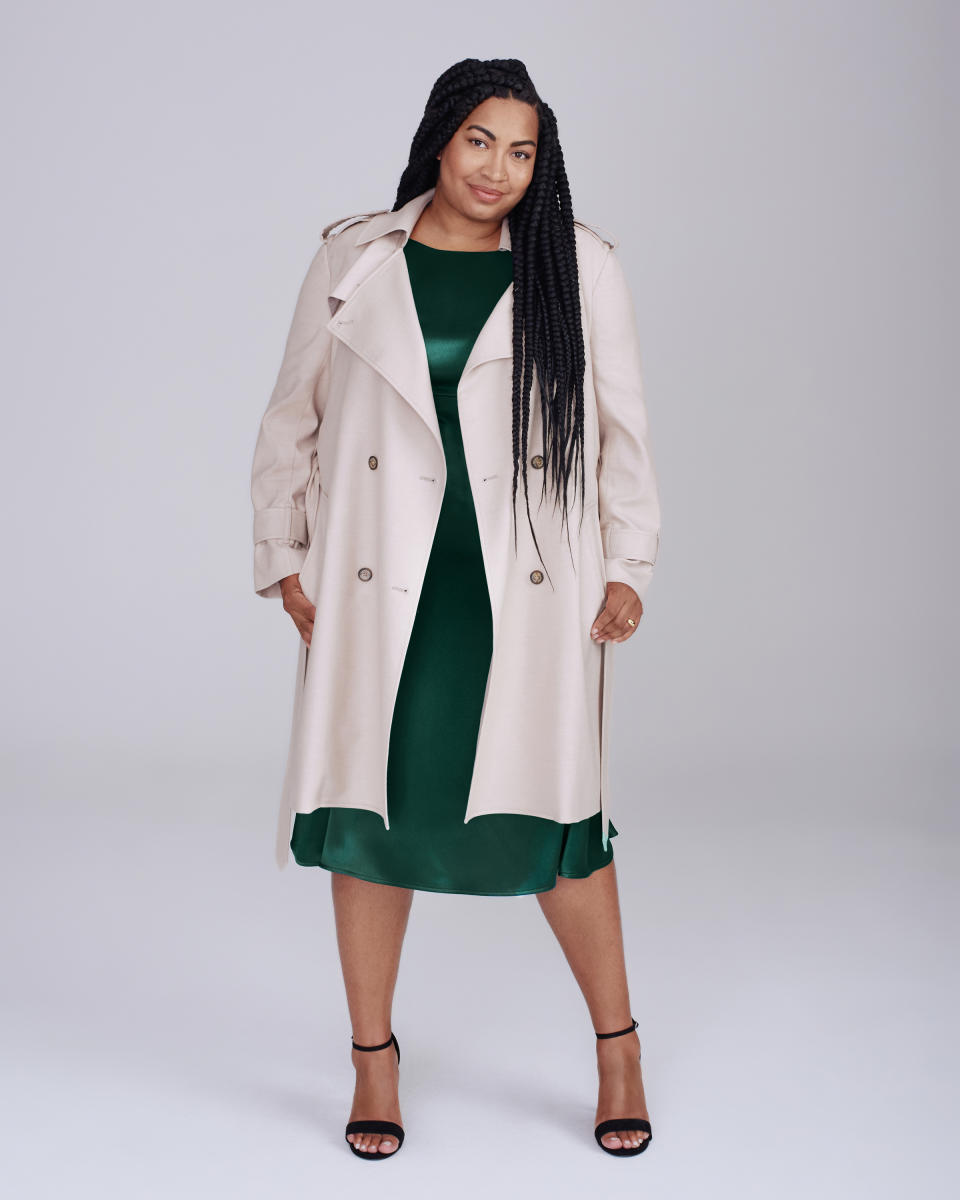
Courtesy Photo
Olisa added that companies and brands often make assumptions about plus-size shoppers based on previous shopping habits, without considering that shopping patterns evolve in plus sizes just as easily as they do in smaller sizes.
“For example, the brand will say, ‘Well, women are buying those pants. So let’s just keep making more of those pants,’” she explained. “But what you don’t know is that she’s sitting at brunch, coveting the parachute pants that her best friend is wearing, but no one ever thought she would like them and therefore never made them in plus.
“It’s almost like, if style is a language, plus-size women are only given like 10 words to express themselves and everybody else has almost infinite words,” Olisa continued. “You can only make up so many songs and stories and poems if you’ve got 10 words to work with. But everybody else has all these words. No woman wants to live like that. No woman wants to live with limited options.”
Moreover, whenever there is progress in the plus-size market, there seems to be two steps backward. In April, Lena Dunham unveiled her five-piece collaboration with 11 Honoré, a women’s ready-to-wear collection that starts at size 12. Former fashion publicist and style blogger of “12ish Style” Katie Sturino quite literally wrote the book on size inclusivity, “Body Talk,” which was released in May, advocating for women to stop obsessing about their weight in a world obsessed with female beauty. Comedian Amy Schumer launched Le Cloud, a women’s rtw line with celebrity stylist and costume designer Leesa Evans in December 2018. The brand, found at Saks Fifth Avenue, goes up to size 20.

Lexie Moreland/WWD
But while these things help increase the number of conversations around size inclusivity — and marketing efforts as a direct result — many brands and retailers still do not carry a larger selection of sizes.
“Over the last few years, I do believe progress has been made, however, there’s still so much more work to be done to truly serve the plus-size consumer,” said Liz Muñoz, chief executive officer of plus-size apparel and accessories retailer Torrid. “We don’t believe curvy bodies should change to fit clothes; we changed clothes to fit curvy bodies.”
Other brands have simply decided to opt out of plus sizes. In March, Loft said it would no longer offer sizes above a size 18 or XXL as of fall 2021.
“Due to continued business challenges from the last year, we have had to make some very difficult decisions, which has impacted our go-forward sizing,” the brand wrote on Instagram.
Loft, which is owned by private equity firm Sycamore Partners, began selling plus sizes in 2018. The company declined to comment further.
And while many retailers across the fashion industry closed up shop during the pandemic, the already-narrow list of options in the women’s plus-size apparel category, made the closures of Lane Bryant and Catherines, both owned by Ascena Retail Group, all the more apparent.
“What you see happen is that you see a lot of brands entering into the plus-size market — perhaps without the right strategies in place — and they kind of dip their toes in and when it doesn’t go according to plan, they exit,” said Joanna Griffiths, founder and CEO of Knix.
“I’ve talked to other brands, as an example, about doing collaborations with Knix, and we’ve walked away from some pretty interesting partnership opportunities, just because the legacy brand didn’t carry the size offerings that we require,” Griffiths continued. “When pushed on it, or asked about it, there are all kinds of excuses. The main one is usually, ‘Oh, she doesn’t, or he doesn’t, shop in our stores.’ And it’s this kind of catch-22, because they’re not going into the store because you don’t carry their size. So why would they go in?”
The in-store experience brings up other issues, such as the fact that most plus sizes can only be found online, making it difficult, if not impossible — or at the very least inconvenient — for plus-size shoppers to try before they buy.
“It sends a message that brands want your money — they now realize that plus-size shoppers are a significant market — but they still don’t want us in their stores. They still don’t want to give up actual rack space to us,” said Virgie Tovar, an advocate, influencer and author of the book “You Have the Right to Remain Fat.” “It feels like the brands want to have a secret relationship with us. That metaphor of the hidden relationship with the fat woman. It’s a very similar dynamic.
“And it can be very confusing when the brands are using all of these plus-size models and these campaigns are really inspiring and amazing and then you go into the store and you probably aren’t going to be able to find that thing in the store,” she continued.
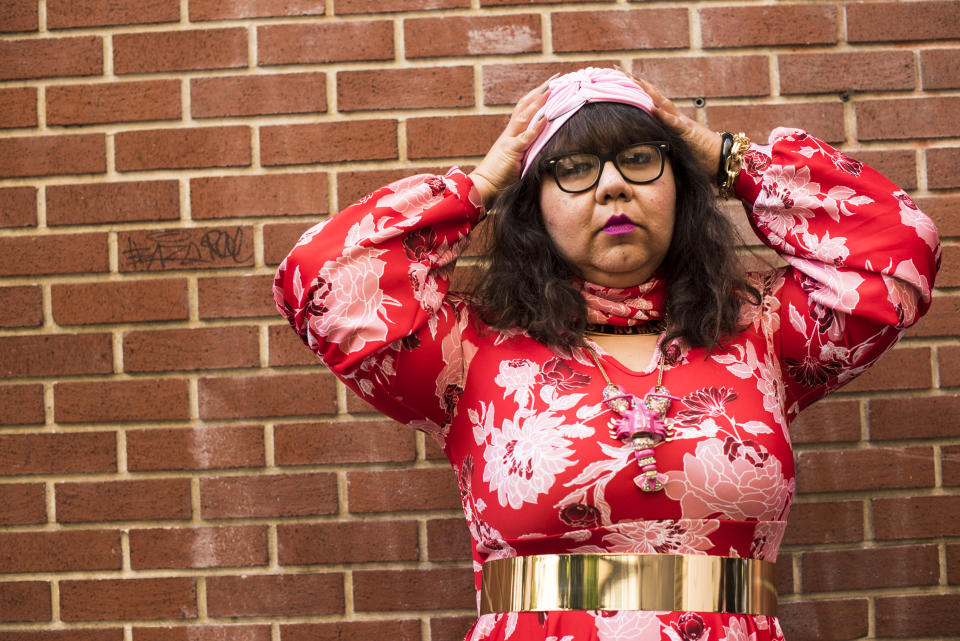
Courtesy Photo
The conflicting messages don’t stop there. Tovar pointed out that most fashion schools don’t teach classes on plus-size fashion or how to make plus-size designs. New York City’s Fashion Institute of Technology offers a class called “Production Pattern Development for Women’s Plus-sizes,” teaching future designers how to “gain a better understanding of the important areas of the body that present a challenge when developing styles,” according to the course description.
New York’s other big fashion school, The New School’s Parsons School of Design, did not have any specific classes teaching plus-size designs on its website. The school did not respond to requests for comment either.
Why is it then, in a fashion landscape that is currently dominated by talk of diversity and inclusion — and with the plus-size market generating nearly a fifth of total women’s apparel revenues — are so many consumers being ignored?
“I think we’re still chasing this idea that plus-size people are a small market, a niche market,” Tovar said. “And there still is this lingering belief that plus-size women don’t want to wear certain clothes, don’t want to show off skin, don’t want to follow trends if the trend is about visibility.”
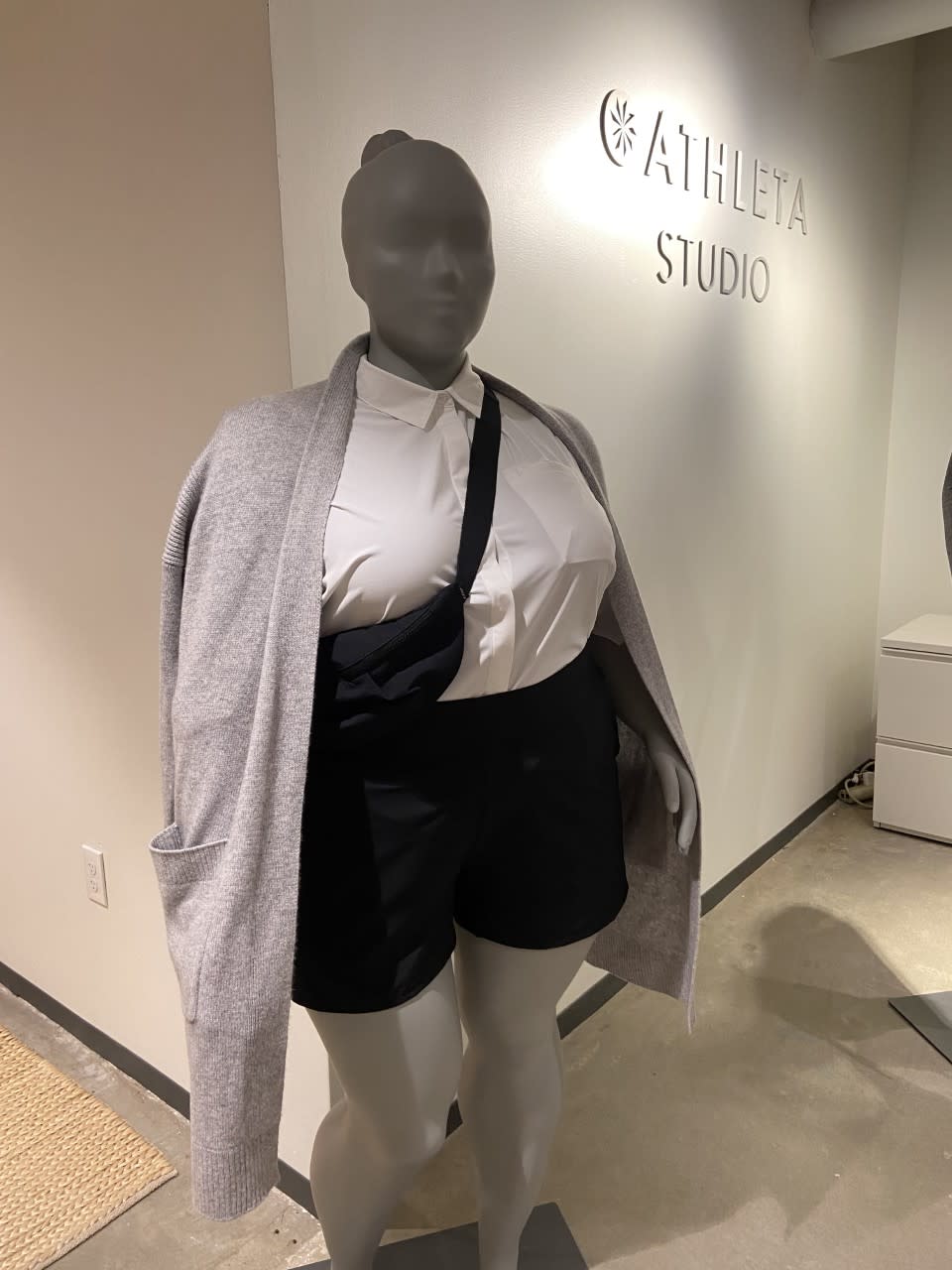
Kellie Ell / WWD
Some brands, however, are taking active steps to include plus-size consumers. Athleta, Dia & Co. and PSK Collective are just a few of the brands that have made a concerted effort to offer extended sizes.
“It’s important to us that when customers shop Kohl’s they see themselves reflected in our brands,” said Doug Howe, chief merchandising officer of Kohl’s, which offers women’s apparel, activewear, sleepwear and innerwear up to sizes 4X in stores and 5X online, as well as select pieces from PSK Collective. “It’s through this lens that we make our merchandising decisions, including our continued work to elevate our inclusive size assortment to ensure we are serving all customers.”
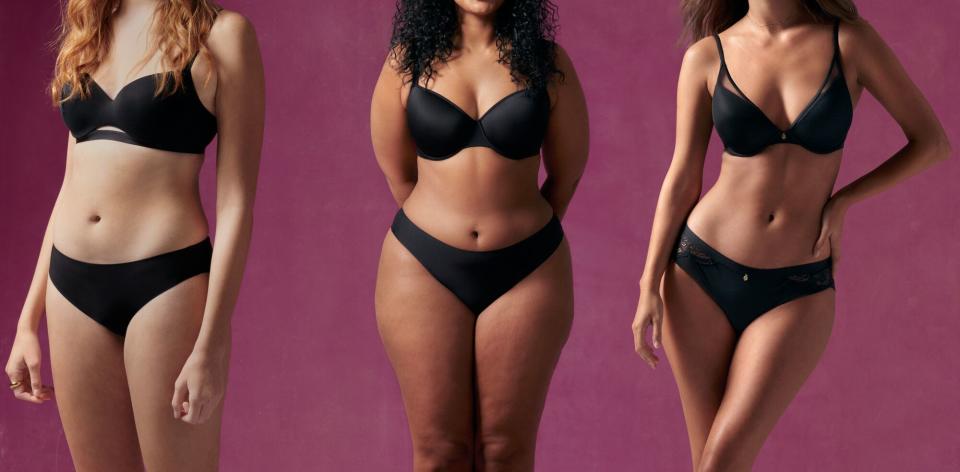
Courtesy Photo
Brands like lingerie e-tailer ThirdLove and activewear brand Superfit Hero have removed traditional numerical sizes or size sections to prevent consumers from feeling uncomfortable or somehow “other” for falling outside what the fashion industry deems normal sizes while in stores or online.
Heidi Zak, cofounder and CEO of ThirdLove, told WWD in 2019 that its stores would not have a designated “plus-size section,” separating shoppers by size.
“The sizes are not called out per se as plus or extended sizes, or anything like that,” Zak explained. “We really incorporated our sizes into our product line, and then imaginary as well, so that you see that breadth of size of woman and size offerings, but without calling out, you know, here’s our extended size line, or something that’s different from the sizes that we had prior to having the extended sizes.”
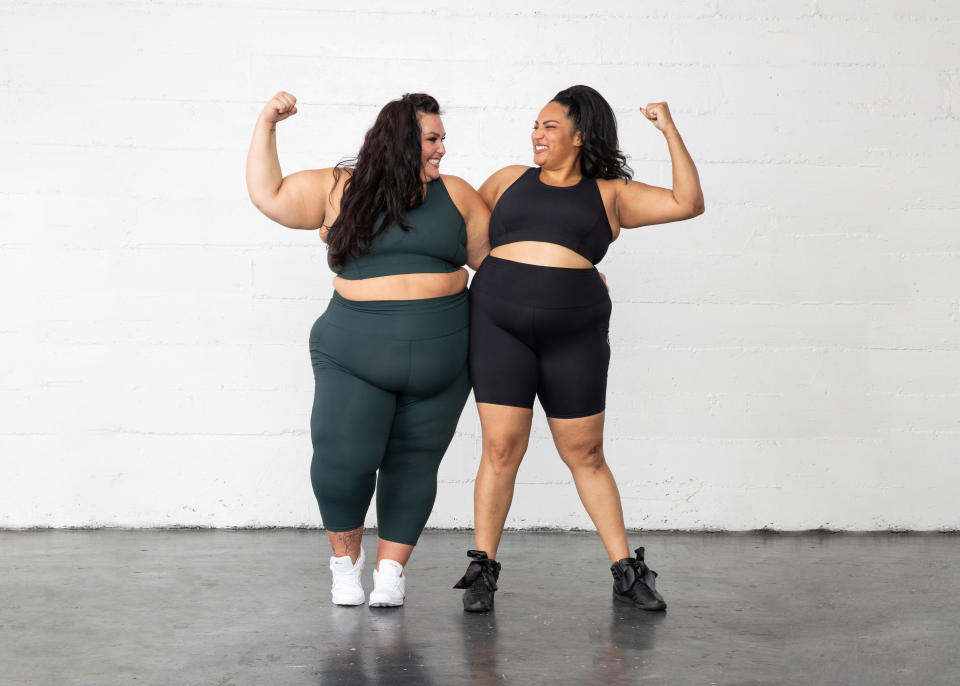
Courtesy Photo
Superfit Hero, the women’s activewear brand that ranges in size from large to 7XL, uses names for different sizes rather than numbers.
“There’s a lot of numbers within the plus-size community, within diet culture, that kind of stuff; there’s a lot of negativity and feelings of emotions around numbers and how they’re perceived,” said Carrie Beth Langham, product manager at Superfit Hero. “So within our brand we have new naming conventions for our sizes. Like, I’m traditionally what the industry would call a 4X, but I’m a ‘Star Fit’ within Superfit Hero. And I wear it like a badge of honor. And people within our community, our customers, this is also another tool for them to connect and find other people of that same sizing and to look at different body types and how that product fits and how it moves. It’s a great reference for others.”
Consumers are getting onboard, voting with their dollars as to which brands they want to support.
Aerie, the innerwear and swimwear brand owned by American Eagle Outfitters, surpassed more than $1 billion in revenues in the most recent quarter, thanks in large part to the brand’s popular AerieReal campaign, which uses models of all shapes and sizes and skips the airbrushing. The brand also offers an extended size range.
“We celebrate real, un-retouched beauty and promote self-love, positivity and empowerment,” said Jennifer Foyle, chief creative officer of American Eagle Outfitters and global brand president of Aerie. “This platform resonates with our very engaged Aerie community because our customers can see themselves reflected in the brand’s marketing and through our partnerships with inspiring role models who champion inclusion and diversity. There have been huge strides in the body positive movement, yet we know there is always more work to do — and that’s what makes us real.”
And it’s not just retail giants reaping the benefits. E-commerce swimwear brand Curvy Beach, which launched in 2017 and offers swimsuits in sizes small to 4XL, or a size 26, regularly sells out of its 3XL and 4XL styles.
“So the demand is there,” said Curvy Beach founder and CEO Elizabeth Taylor.
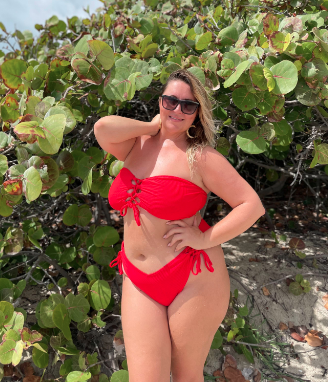
Courtesy Photo
Still, other fashion brands have yet to embrace larger sizes, arguing instead that it’s too expensive to offer an extended selection of sizes.
But Olisa pointed out that a lot of those same brands lean into petite sizes.
“And that is a specialty size, just like plus,” she said, arguing that brands will often give petites more time to catch on before pulling the plug than plus sizes. “The brands that attempt to serve the plus-size shopper, they feel like it’s a risk.
“It’s easy to call it a money problem when it’s not your problem and you don’t have to deal with it,” Olisa added.
Tovar said it’s important to create accountability among companies and brands.
“Because what that cost conversation is saying in part is that we are still invested in creating for the smallest customers in a way that we’re not invested in creating for the largest customer,” she explained. “Every company has limited resources. What they’re choosing to do with those resources is what matters. That’s part of what it means to have corporate responsibility. That’s part of what it looks like to create products in an always shifting and dynamic population.
“I see a lot of companies, a lot of smaller companies, that are taking a lot of risk and eating a lot of costs to innovate and essentially push the industry forward,” Tovar added.
One of them is Superfit Hero. The activewear brand, which sold sizes XS through 5XL when it was launched, shifted to sizes large to 7XL last year. Founder and CEO Micki Krimmel said the rebrand was largely due to a gap she saw in the market.
“There are a ton more options [in plus sizes] now than there were even a year ago,” Krimmel said. “But I still think it’s not quite being addressed from a really authentic standpoint from most mainstream brands. The problem we’re solving for our plus-size consumer is a different problem than we were solving for our straight-size consumer.
“When we announced that we were shifting, we were actually excluding some folks,” Krimmel continued. “We had plenty of people who bought smalls and mediums from us that were no longer going to be served by our size range. But the vast, vast, vast majority of those people were, like, super supportive of what we were doing.”
Another brand to capitalize off the growing plus-size market is Christian Siriano. In 2018, the designer said he tripled his business by adding plus sizes. Dia & Co., the plus-size fashion platform and subscription service, continues to expand, most recently by adding plus-size lingerie and swimwear to the assortment, including bras by ThirdLove. In June, ready-to-wear brand M.M. LaFleur began selling select pieces on Dia’s website.
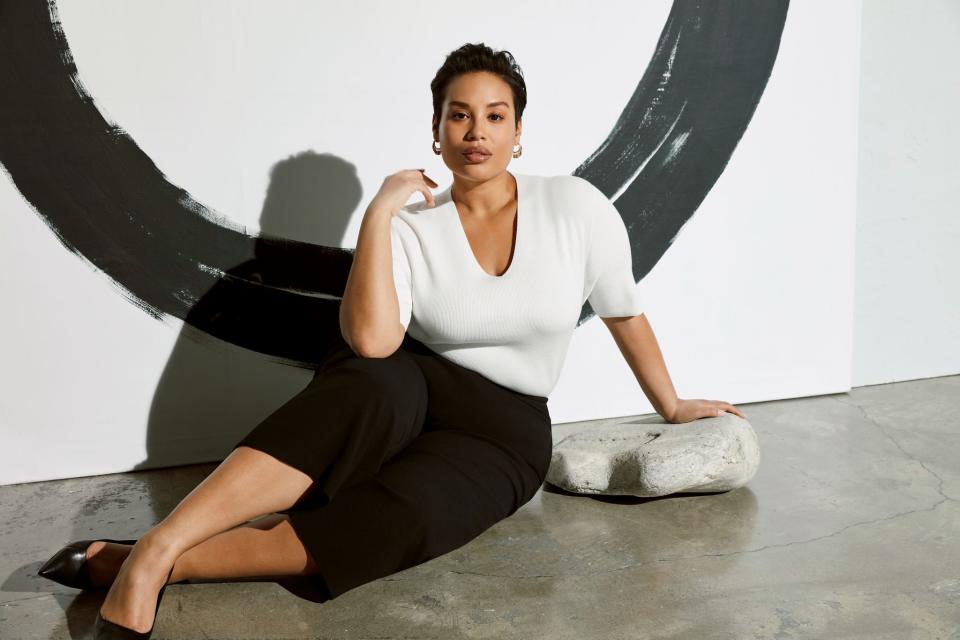
Courtesy Photo
In the end, having more sizes and style options is simply a better business practice, said Nadia Boujarwah, cofounder and CEO of Dia & Co.
“If plus-size consumers are not able to shop in the same way smaller-sized shoppers are, we can’t expect them to spend the same amount of money,” Boujarwah said. “If you have access to any clothes you want — without knowing that there’s probably something that’s going to need to be changed, or that’s not quite right, or that’s not available in your size — then you would buy more clothes. There’s so many places where that friction gets introduced into her shopping experience.”
So what can companies and brands do to accommodate the plus-size consumer aside from simply adding more sizes. For one, they can hire more plus-size people, Olisa said.
“If the people who need plus-size clothes aren’t reflected at the leadership level, at the ownership level, at the C-suite level — and if the people who are there now aren’t willing to allow those people in and to have a true seat at the table — then yes, plus-size women are going to be stuck in this kind of echo chamber of like, ‘Be confident. But here’s the same clothes from five seasons,’” Olisa said.
“[The thinner executives at] the brands don’t have to walk into a store and feel the effect of [a lack of options],” she continued. “I want to ensure that someone who knows what it’s like to put on a size 28 jean, or who knows what it’s like to need a pair of pants and not be able to find it, are the ones creating content and products for plus-size women. That’s the only answer. Until you’ve felt that pain and feel it every day, I don’t know that you can properly serve plus-size women and give them what they want. Because if you have jeans that are a double digit, there are specific things that you need that are different than a size 2.”
There’s also the continued problem of fat shaming. Take Nike, for example. The athletic apparel and footwear giant introduced plus-size mannequins in the summer of 2019, leading to mixed responses from the public. Some praised the retailer for its inclusivity and body acceptance messages, while others criticized the brand for supporting obesity and other health-related problems. Nike would not respond to requests for comment.
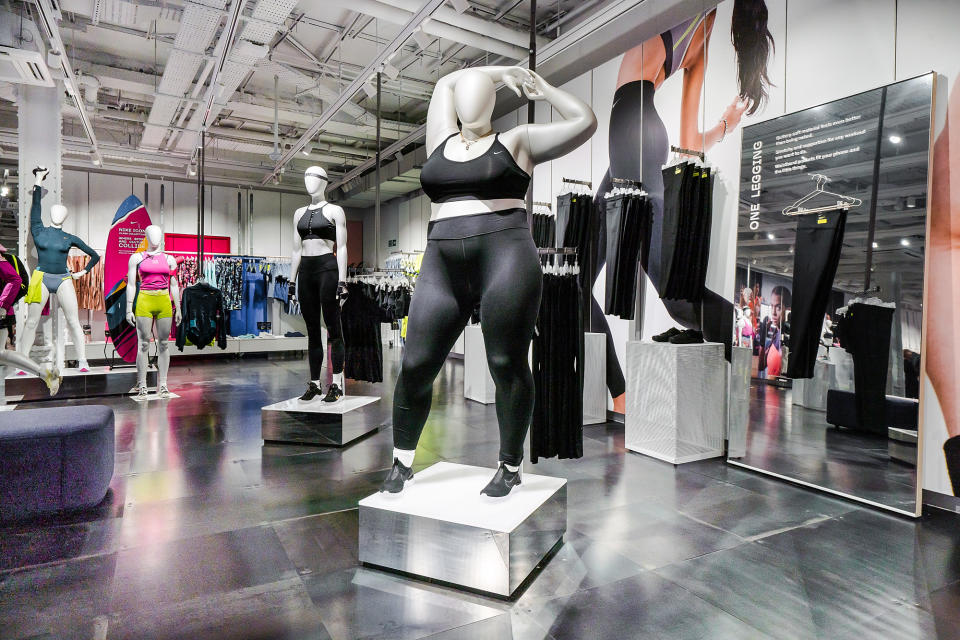
Nike
“It is still the prevailing attitude that a higher-weight person is someone who is degrading the brand, which is just fatphobic,” Tovar said, adding even among plus-size models and styles there’s a lot of the same silhouettes popping up again and again. “There’s still a premium on plus-size models who have flat stomachs, for example. Or, who are busty, but don’t have double chins, or who don’t have big upper arms. But there’s a lot more body diversity when you’re in the plus-size world and in a plus-size body.”
Chan agreed there is a plus-size ideal. “As there is for any model,” she said. “But consumers need to see clothes on different body types. We need brand’s websites to show different size models. We need to see the products on different size models. Then people are more likely to buy.
“Plus-size consumers are very smart consumers,” Chan continued. “And they’re emotional consumers, because we’ve been excluded for so long. We can tell when the marketing is not genuine.’”
Boujarwah added that while the use of plus-size models has increased in recent years, the reason these models still get so much attention is precisely because they are so unusual in the fashion world, with many brands using it as a marketing strategy.
“We still celebrate every plus-size model that comes down a runway at fashion week, because it is still not the norm,” she said.
There’s also the issue of actual fit, since a tall plus-size shopper would have vastly different needs than a petite plus-size shopper. Some brands use algorithms on their website so returning shoppers see models in sizes from past purchases.
But some remain skeptical of such methods, arguing that companies and brands need to consult consumers — actual people who live in plus-size bodies — rather than data.
“Bodies don’t function within a mathematical equation, within the tidiness of mathematics,” Tovar said.
“In general, that’s still the prevailing way that fashion is created,” she added. “And I think that’s a really big problem.”
Best of WWD
Sign up for WWD's Newsletter. For the latest news, follow us on Twitter, Facebook, and Instagram.

